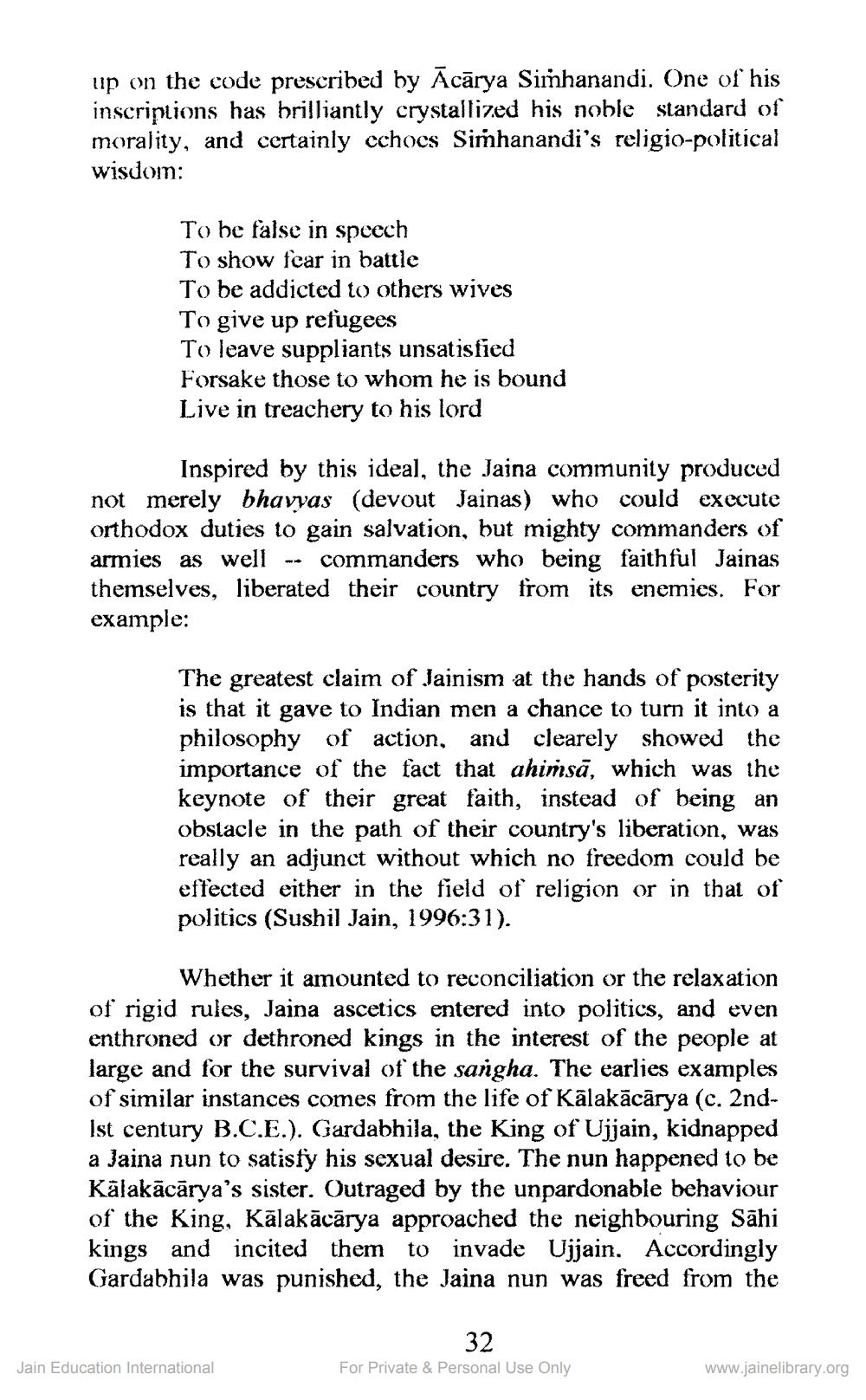________________
up on the code prescribed by Acarya Simhanandi. One of his inscriptions has brilliantly crystallized his noble standard of morality, and certainly echoes Simhanandi's religio-political wisdom:
To be false in speech
To show fear in battle
To be addicted to others wives
To give up refugees
To leave suppliants unsatisfied
Forsake those to whom he is bound Live in treachery to his lord
Inspired by this ideal, the Jaina community produced not merely bhavyas (devout Jainas) who could execute orthodox duties to gain salvation, but mighty commanders of armies as well commanders who being faithful Jainas themselves, liberated their country from its enemies. For example:
The greatest claim of Jainism at the hands of posterity is that it gave to Indian men a chance to turn it into a philosophy of action, and clearely showed the importance of the fact that ahimsa, which was the keynote of their great faith, instead of being an obstacle in the path of their country's liberation, was really an adjunct without which no freedom could be effected either in the field of religion or in that of politics (Sushil Jain, 1996:31).
Whether it amounted to reconciliation or the relaxation of rigid rules, Jaina ascetics entered into politics, and even enthroned or dethroned kings in the interest of the people at large and for the survival of the sangha. The earlies examples of similar instances comes from the life of Kālakācārya (c. 2nd1st century B.C.E.). Gardabhila, the King of Ujjain, kidnapped a Jaina nun to satisfy his sexual desire. The nun happened to be Kālakācārya's sister. Outraged by the unpardonable behaviour of the King, Kālakācārya approached the neighbouring Sahi kings and incited them to invade Ujjain. Accordingly Gardabhila was punished, the Jaina nun was freed from the
Jain Education International
32
For Private & Personal Use Only
www.jainelibrary.org




